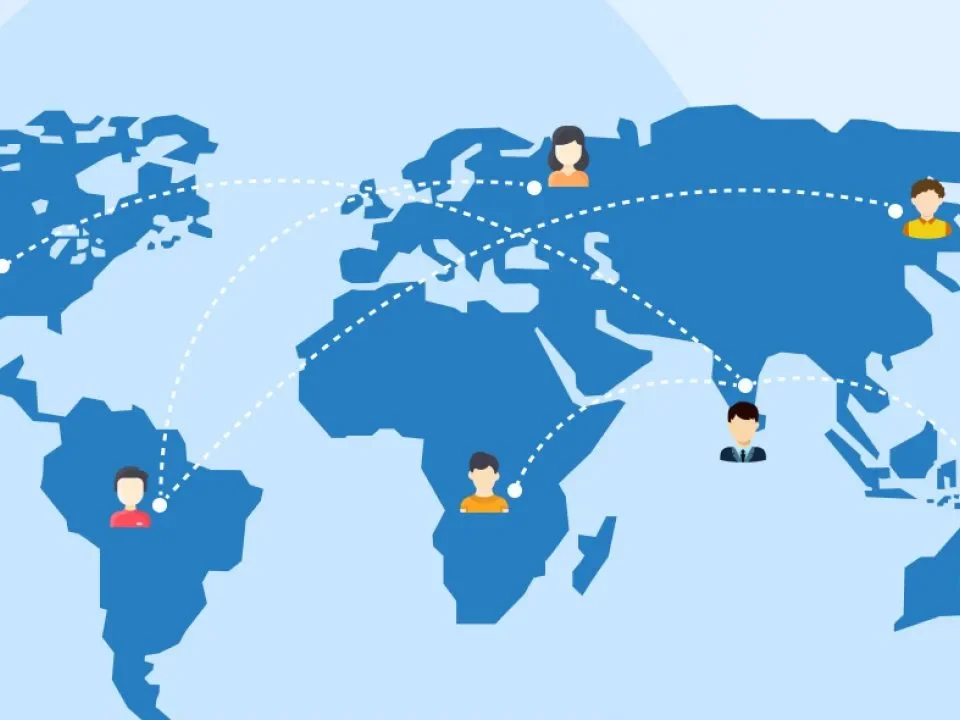Explore why digital marketing services for UAE are crucial for...

Top IT Support Practices for Global Teams | Enhance Global Productivity with iValuePlus
June 26, 2025
Offshore Development Centre for UAE Businesses | iValuePlus
June 27, 2025- bot model
- BOT vs ODC
- build operate transfer model
- Build Operate Transfer outsourcing
- GCC setup
- India software development hub
- India tech talent
- IT outsourcing for startups
- IT outsourcing India
- iValuePlus services
- odc model
- offshore development center
- Offshore team management
- startup engagement models
- startup outsourcing

BOT vs ODC: Which Engagement Model is Best for Your Startup?
In today’s startup ecosystem, expanding globally often demands cost-effective, scalable, and talent-rich development models. Two standout startup engagement models that dominate discussions are the Build-Operate-Transfer (BOT) model and the Offshore Development Center (ODC). If you’re a startup evaluating BOT vs ODC, understanding their nuances is critical for long-term success—especially when considering IT outsourcing for startups, data security, and long-term offshore strategy. This article dives deep into what each model offers, compares BOT vs ODC from a startup perspective, and helps you make a decision that aligns with your growth, control, and cost-efficiency goals.
What Is the BOT Model?
Build-Operate-Transfer (BOT) is a strategic outsourcing model where a third-party service provider sets up, runs, and then transfers ownership of the offshore operation back to the client after a fixed period or upon achieving defined milestones. It is a powerful form of build operate transfer outsourcing, particularly effective for startups looking to establish a GCC setup (Global Capability Center) in countries like India.
Phases of the BOT Model:
- Build: The vendor sets up infrastructure, hires staff, and establishes operations.
- Operate: TThe vendor runs the operation as per agreed SLAs, optimizing performance and offshore team management.
- Transfer: Ownership is handed over to the client. The client assumes full control of the team, assets, and operations.
What Is an ODC?
An Offshore Development Center (ODC) is a dedicated remote team located in a low-cost country, functioning as an extension of the client’s in-house team. However, the service provider typically retains ownership of resources, infrastructure, and management. For many early-stage companies, this is an ideal entry into IT outsourcing India and a flexible way to access India tech talent.
Key Characteristics of ODC:
- Long-term remote team extension
- Team scaling based on client needs
- No transfer of ownership
- Ideal for development, QA, maintenance
BOT vs ODC: Key Differences
Feature | BOT Model | ODC Model |
Ownership | Transferred to client | Remains with vendor |
Duration | Typically 2–5 years | Open-ended |
Control | Full after transfer | Partial or limited |
Investment | Initial vendor investment | Pay-as-you-go |
Risk | Shared initially, then client-owned | Largely vendor-owned |
Exit Flexibility | High post-transfer | Depends on vendor contract |
Strategic Value | Long-term asset creation | Tactical execution |
Customization | High, client-driven | Moderate to low |
BOT vs ODC: Which Works Best for Startups?
Let’s analyze BOT vs ODC across key startup decision parameters:
1. Cost Efficiency
- ODC is ideal for short to mid-term cost savings. There’s no capital expenditure, and you pay for services monthly.
- BOT, while costlier upfront, becomes more cost-effective in the long run due to full ownership.
Verdict:
- Use ODC if you’re testing offshore waters.
- Go BOT if you’re planning scale and permanent operations.
2. Speed to Market
- ODC offers faster setup—teams can be ready in weeks.
- BOT takes longer due to legal, compliance, and transfer planning.
Verdict:
- Choose ODC for MVPs or PoCs.
- BOT works when long-term stability outweighs quick entry.
3. Control and Customization
- BOT hands over full control post-transfer: policies, workflows, tools.
- ODC requires adherence to the vendor’s frameworks.
Verdict:
- For startups needing proprietary processes or data governance, BOT is superior.
4. IP and Data Security
- BOT ensures end-to-end IP security with eventual internal ownership.
- ODC models carry moderate IP risks, especially when vendor scales similar teams.
Verdict:
- BOT wins when IP, compliance, or regulations are critical (e.g., fintech, healthtech).
5. Talent Retention
- BOT enables deeper team integration, fostering loyalty and reducing attrition.
- ODC teams may feel detached due to lack of long-term visibility or client branding.
Verdict:
- For strategic product development or R&D, BOT is better for building loyal teams.
iValuePlus: Your Partner for BOT and ODC in India
At iValuePlus, we specialize in helping startups and global businesses set up both ODCs and BOTs in India, with a special focus on talent quality, compliance, and scalability.
Here’s how we support your journey:
BOT Model Services:
- Build: We scout the best location (including tier-2 cities), set up compliant infrastructure, and source top-tier talent.
- Operate: We run your offshore unit seamlessly with local HR, legal, finance, and IT support.
- Transfer: At the agreed time, we help you take over the center with zero disruption.
ODC Services:
- End-to-end remote team sourcing
- Plug-and-play team extension
- Flexible monthly engagement models
- Transparent costing and SLA management
Whether you want a testbed ODC or a full-fledged GCC through BOT, we adapt to your startup’s growth curve.
Hybrid Model: Start with ODC, Transition to BOT
For many startups, a hybrid strategy works best. Start with an ODC to test product-market fit or market viability. Once validated, transition into a BOT model, gaining long-term value without disrupting momentum.
iValuePlus offers a seamless path from ODC to BOT—same talent pool, same infra, but evolving ownership to match your growth phase.
Legal & Compliance Factors to Consider
Before you finalize your BOT vs ODC model, here are a few legal items to factor in:
- India’s GCC policies: Incentives in states like Karnataka, Gujarat, and Telangana may favor BOT over ODC.
- Transfer Pricing & Taxation: BOT structures need early-stage tax planning.
- IP Assignment & NDA: Clearly drafted agreements must protect your innovation.
iValuePlus brings legal experts and compliance specialists onboard to make sure your structure is legally strong and investor-friendly.
Real-World Use Cases
Startup A (Fintech, US)
- Needed a high-security setup for AI-based credit scoring.
- Chose BOT to align with regulatory expectations.
- iValuePlus helped establish a 50-member center in Pune within 6 months.
Startup B (SaaS, Europe)
- Wanted fast offshore capacity to support client onboarding.
- Opted for ODC, scaled to 25 developers in 2 months.
- iValuePlus provided talent, workspace, and virtual management.
Final Verdict: BOT vs ODC
Startup Scenario | Recommended Model |
MVP or Product Validation | ODC |
Long-term cost optimization | BOT |
Sensitive IP or compliance needs | BOT |
Need to scale quickly | ODC |
Seeking permanent offshore presence | BOT |
Unsure of offshore viability | ODC → BOT (Hybrid) |
Conclusion
Choosing between BOT vs ODC isn’t just about cost—it’s about control, scale, and vision alignment. Startups that prioritize agility may begin with an ODC, while those focused on building a deep offshore capability should consider a BOT model from the outset.
At iValuePlus, we understand startups. Whether you’re testing offshore waters or building your next-gen tech team in India, we offer scalable, secure, and compliant solutions for both ODC and BOT models.
Let us help you choose—and build—what’s best.
Recent Post
Why Staff Augmentation Services for Dubai Startups Are Essential Amid Talent Gaps
Staff augmentation services for Dubai startups are essential amid a...
Offshore Development Centre vs Nearshore Teams: What’s Best for You?
Compare offshore development centers vs. nearshore teams to find the...








